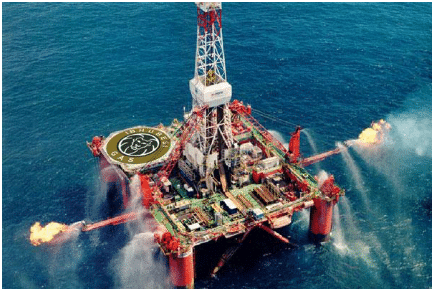Zawtika project includes the development of the Zawtika, Kakonna and Gawthaka fields, located in blocks M9 and M11 of the Gulf of Martaban, offshore of Myanmar. The project is spread across an area of 11,746 square kilometres.
Petroleum Authority of Thailand Exploration and Production International (PTTEP International) is the operator of the project. PTTEP owns an80% interest in the project, with Myanma Oil and Gas Enterprise (MOGE) holding the remaining 20%.
The $2bn project initially started delivering natural gas for domestic purpose in Myanmar in March 2014 at a rate of approximately 60 million standard cubic feet per day (MMscf/d). In August 2014, it started exporting natural gas to Thailand at a rate of 240MMscf/d.
Myanmar is estimated to contain 3.2 billion barrels of oil and 18 trillion cubic feet (tcf) of natural gas reserves. Nearly a quarter of this production is sent to Thailand. Output from the Zawtika field is also being sent to Thailand, increasing its imports to between 1.2 and 1.3 billion cubic feet each day.
Discovery and geology of Myanmar’s fields
All the three fields of the project were discovered in 2007. Zawtika was discovered by the Zawtika-1 well in 2007. It hit seven significant gas reservoirs and accumulations.
Gawthaka was discovered by Gawthaka-1 well, which was drilled to a depth of 3,380m and flowed at the rate of 9.4MMcfd.
Drilling of the Kakonna-1 well led to the discovery of the Kakonna field. The well indicated a link between the northern and southern parts of Block M9. It flowed at the rate of about 21.2MMcfd and 8.6MMcfd during two tests.
The Zawtika project fields are biogenic gas formations consisting of reservoirs of Miocene-Pliocene Delta Front sandstones, located at a depth of 750m to 1,580m, and shallower reservoirs in the Pleistocene strata at depths of 500m.
The project is estimated to contain nearly two trillion cubic feet (tcf) of gas.
Drilling and appraisal of the Burmese gas fields
PTTEP drilled seven exploration wells in Block M9 in 2007 after the discovery of the Zawtika field. These were Zawtika-1, Gawthaka-1, Kakonna-1, Zawtika-2, Zawtika-3, Zawtika-4 and Zawtika-5.
Zawtika-2 well, located in the southern part of Block M9, was drilled to a depth of 3,500m. It encountered significant quantities of natural gas in six zones and flowed at the rate of 109.5 million standard cubic feet a day.
Zawtika-3 was drilled to a depth of 2,274m and encountered hydrocarbons in eight zones. It flowed at the rate of 26.7MMcfd. Zawtika-4 flowed at the rate of 71.1MMcfd from two zones. It was drilled in May 2007 to a depth of 2,390m.
Zawtika-5 encountered seven natural gas zones and flowed at the rate of 38.36MMcfd. In 2010, PTTEP drilled two appraisal and one exploration wells.
Zwatika developments
PTTEP submitted the field development plan for the project to MOGE in the last quarter of 2011. The plan was approved in February 2011. Detailed engineering and construction work for the project was completed in the third quarter of 2013.
The project is planned to be developed in phases. The first phase of the project included the installation of three wellhead platforms, an integrated processing and living quarters, and 21km of subsea pipelines with 18in diameter.
Nearly 80% of the produced natural gas will be exported to Thailand through a 28in diameter, 300km long pipeline. About 230km of the pipeline will be laid offshore, while the remaining 70km will be onshore.
Infrastructure of PTTEP’s project
The three wellhead platforms and jackets weigh between 7,000t and 8,000t. They are installed at a water depth of 130m to 150m.
The processing facility includes topsides weighing 15,000t. The jacket of the topsides includes 20,000t piles. The processing facility also includes living quarters, with an accommodation capacity for 128 persons, and a 100m flare boom. It is a bridge connected to one of the wellhead platforms.
Contracts awarded for the gas fields
Larsen & Toubro Valdel Engineering was awarded a $200m contract to carry out the detailed engineering and design for the first phase of the project. The contractual scope included the three wellhead platforms and related equipment. Larsen & Toubro subcontracted EPConsult Energies to carry out safety, risk and reliability studies for the project. The platform installations were completed in the first quarter of 2013.
SMOE was awarded a $600m contract for engineering, design, construction and installation of the processing and accommodation platform. China Petroleum Pipeline Bureau won a $180m contract for the onshore export pipeline and facilities.
Process Group was subcontracted by SMOE to supply a produced water treatment package and a fuel gas package.
Bredero Shaw, a unit of ShawCor, won a $600m pipeline coatings contract. Under the contract, Bredero Shaw provided anticorrosion coating and concrete weight coating for the pipelines used for the project.
FMC supplied restriction orifice plates and spools. Sound Environmental carried out noise and vibration studies for development of the field.


















































